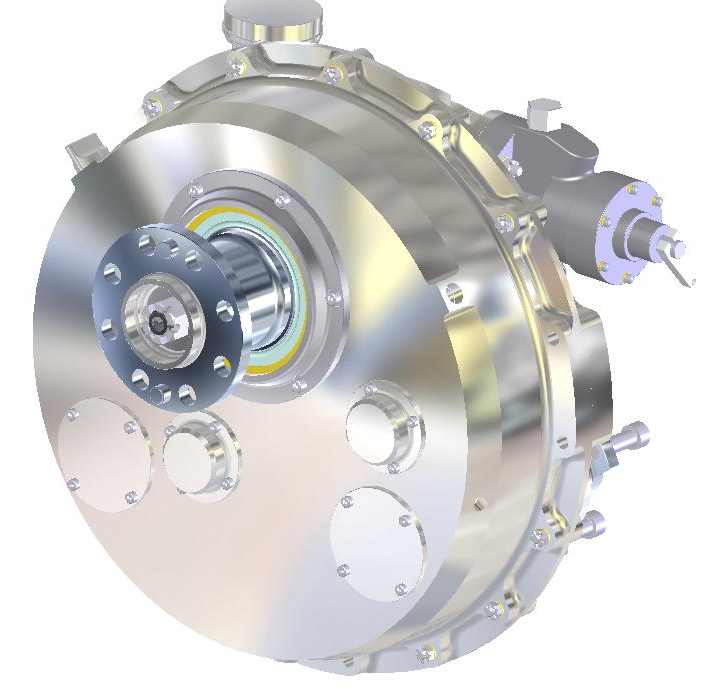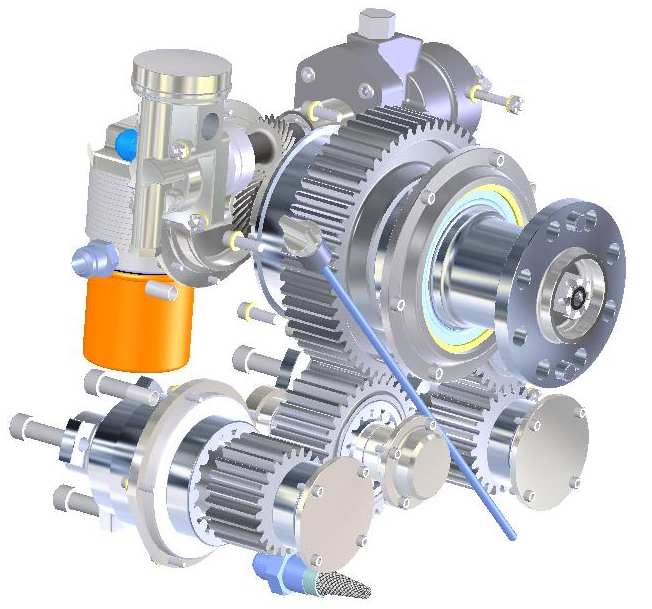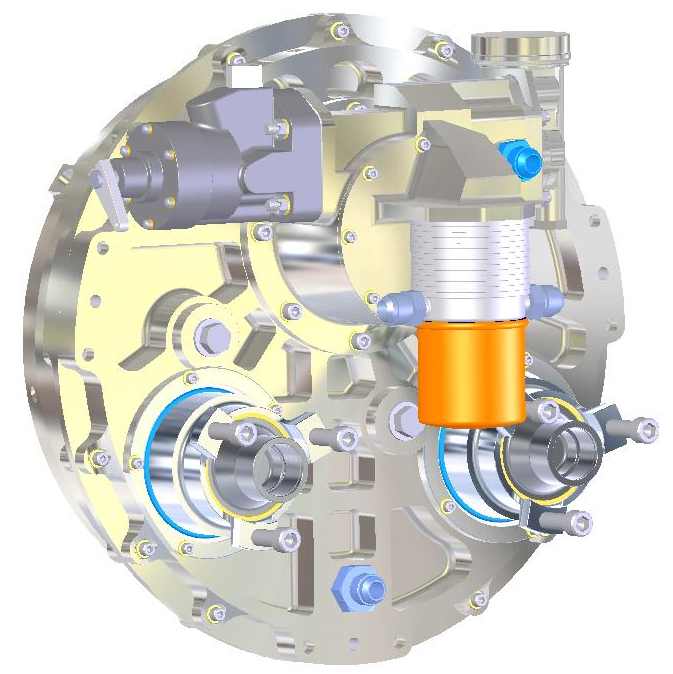- Mark-14 -
Geared Reduction Unit for Two Engines Driving One Propeller
NOTE: All our Products, Designs, and Services are SUSTAINABLE, ORGANIC, GLUTEN-FREE, CONTAIN NO GMO's, and will not upset anyone's precious FEELINGS or delicate SENSIBILITIES.
NOTE: This gearbox project is currently on " indefinite hold" due to the untimely demise of the financial backing partner in the crash of a turbine-powered experimental he was flying. The gearbox is in complete, finished design form, with engineering drawings and several prototype pieces manufactured.
The EPI Mark-14 gearbox was specially designed to drive a single propeller with two separate engines. This project was especially interesting because, although it had been tried before, it has never been successfully accomplished with a piston engine.
EPI's vibration-reducing technology is the likely solution to that long-prevailing problem.
The design effort on the Mark-14 gearbox began in January, 2003 and was completed in May, 2003, when construction of the prototype began.
The idea for this gearbox was the brainchild of a brilliant engineer (retired from the Lockheed Skunkworks™) who designed a two-place sport aircraft with extremely low drag characteristics, which was intended for the experimental marketplace in kit-form.
The aircraft was to be powered by TWO 4-valve, DOHC, liquid-cooled V8 engines driving a single, high-performance propeller. The engines are both positioned forward of the firewall, side-by-side, rotated about their crankshafts roughly 80 degrees from vertical, in opposite directions. The base configuration was planned to be normally-aspirated, with turbocharged and racing-optimized engines as available options.
EPI was scheduled to develop the powerplant configurations for this aircraft.
CFD analysis of the design indicates that this aircraft, with two conservatively-rated engines of 300 HP each, would be able to cruise in the vicinity of 375 MPH.
The EPI Mark-14 gearbox, which couples the two engines to the single propeller, has a number of interesting features. The design torque capacity is over 600 lb-ft. on each input. Gear ratios are available to accommodate engine speeds in excess of 6500 RPM.

The gearbox attaches to the front of the engine mount structure, roughly two feet forward of the side-by-side engines. It automatically accommodates the failure of either of the two engines. Unlike a conventional twin, the pilot need not go through the normal engine failure drill to secure the failed engine within a few seconds. The Mark-14 gearbox automatically disconnects the failed engine from the prop.
The gearbox incorporates a separate lubrication system with its own oil supply and integrated oil-to-water heat exchanger. The pressure pump draws from the sump through a removable finger screen, and pumps the oil first through a spin-on filter, then through the heat exchanger, then to the gearbox.

The prop governor system is also integrated into the design. Both the governor and lube pump are powered by a torsionally-isolated gear drive. The control and lube plumbing are all internal to the gearbox.

The gearbox includes the capability to control reversing propellers, with integrated beta-feedback and control linkage for a reversing governor.
At the client's request, this design uses rolling-element bearings throughout. As a result, the weight of this gearbox (107 lbs.) is substantially higher than if we used the hydrodynamic bearings normally found in EPI gearbox designs.
If the project was to be revived, we would want to revise the system to use hydrodynamic bearings similar to those that are used in our very successful Mark-9 and Mark-15 gearboxes

